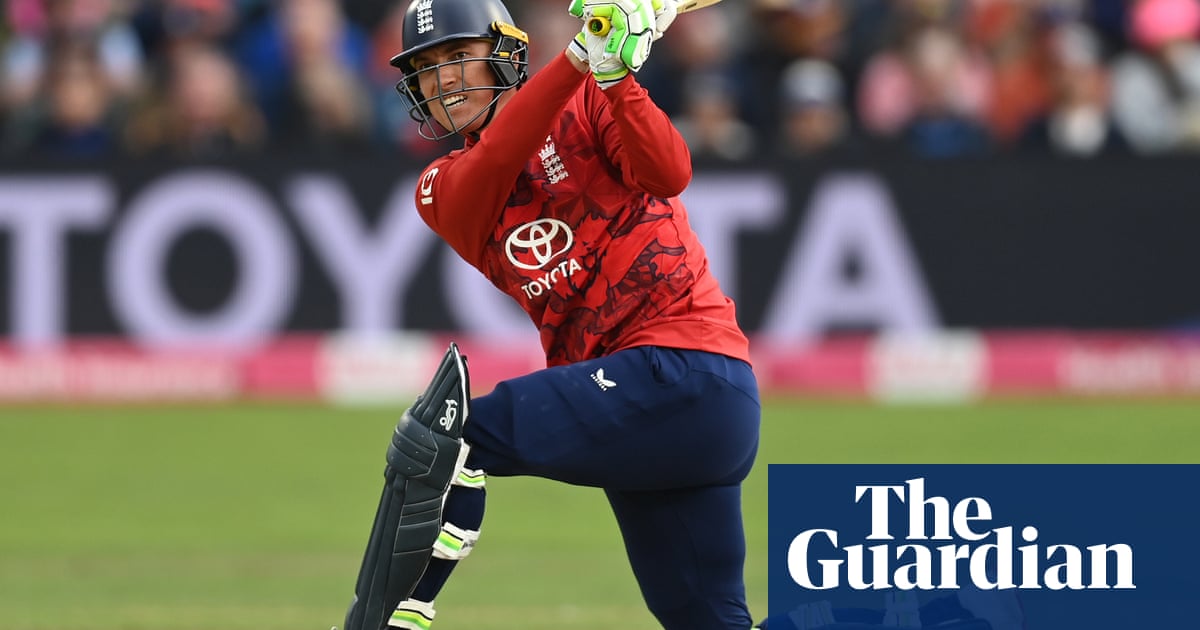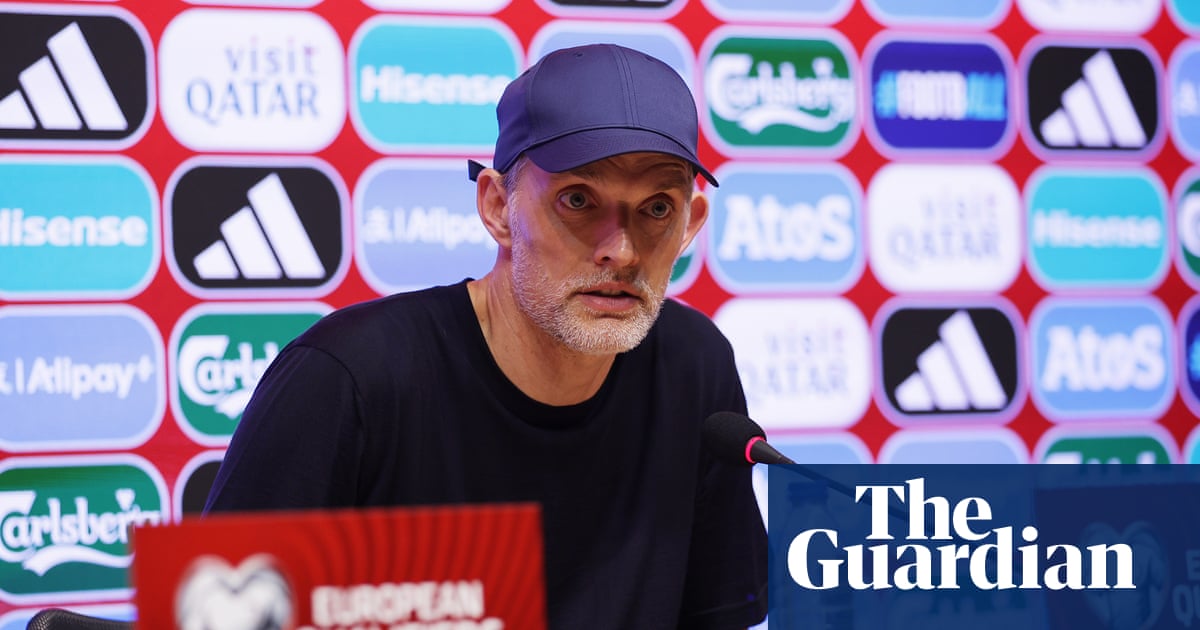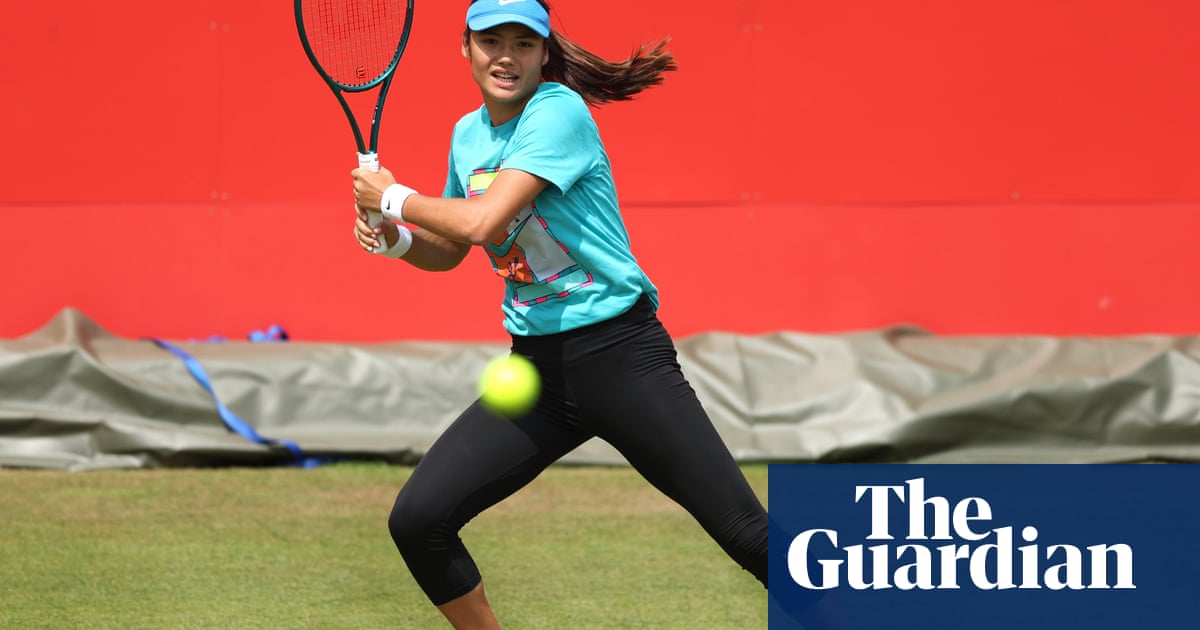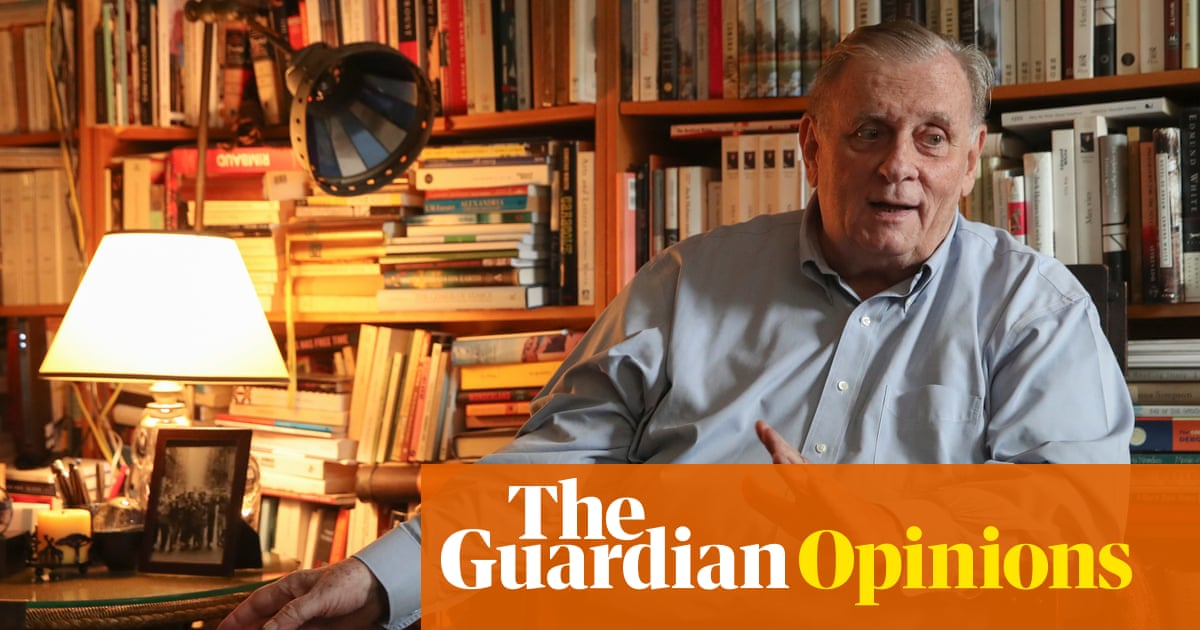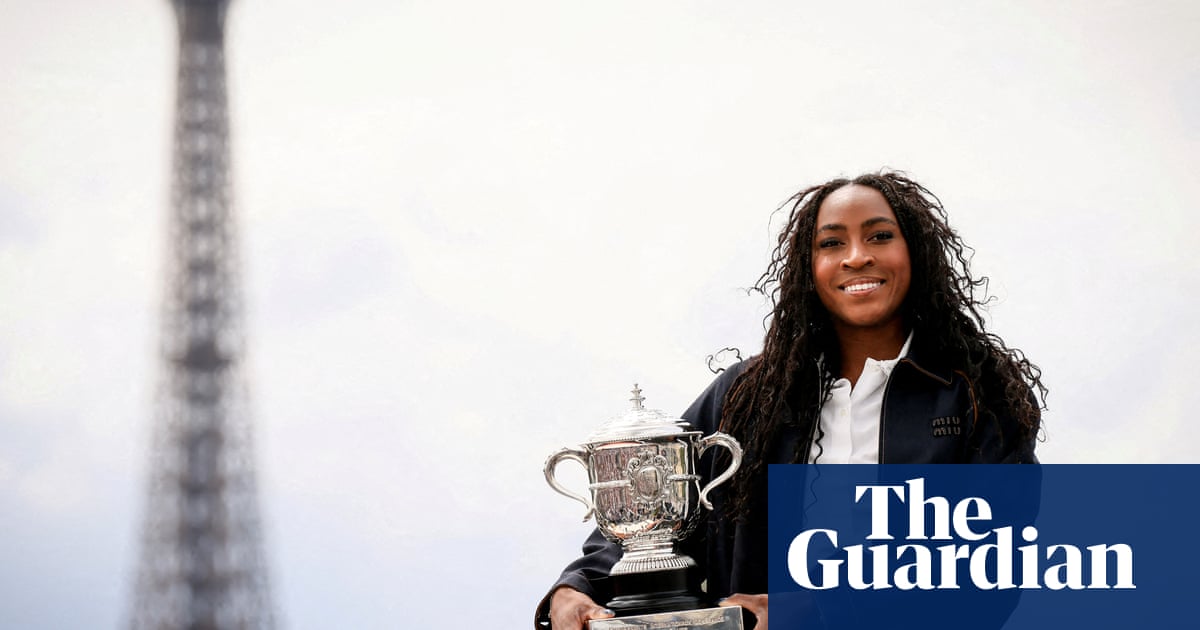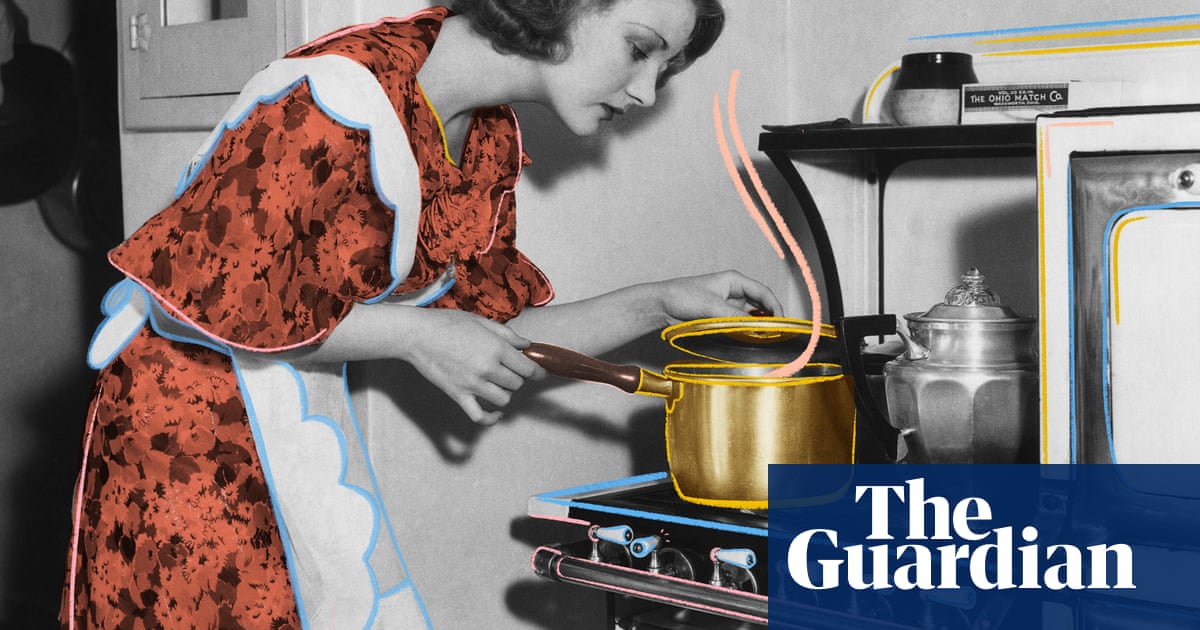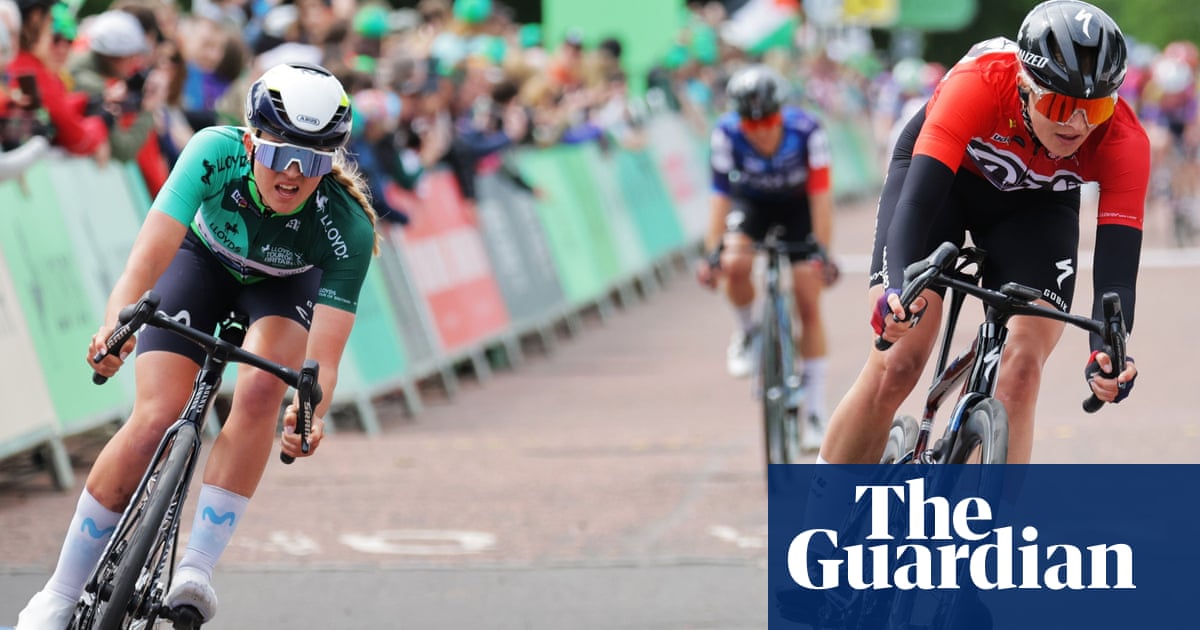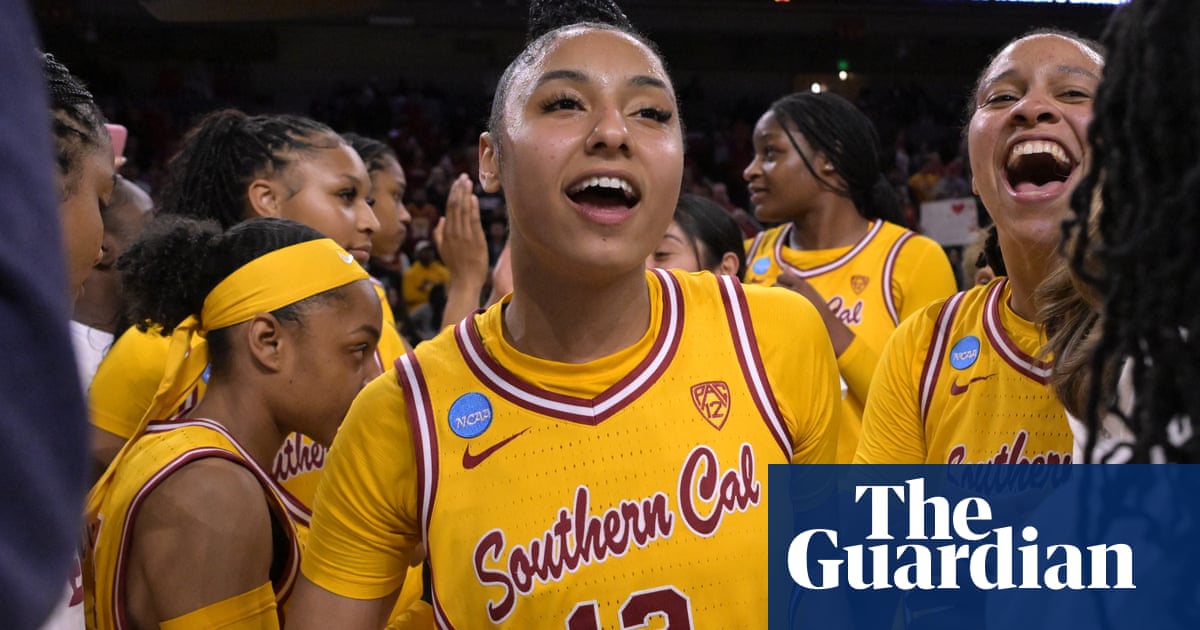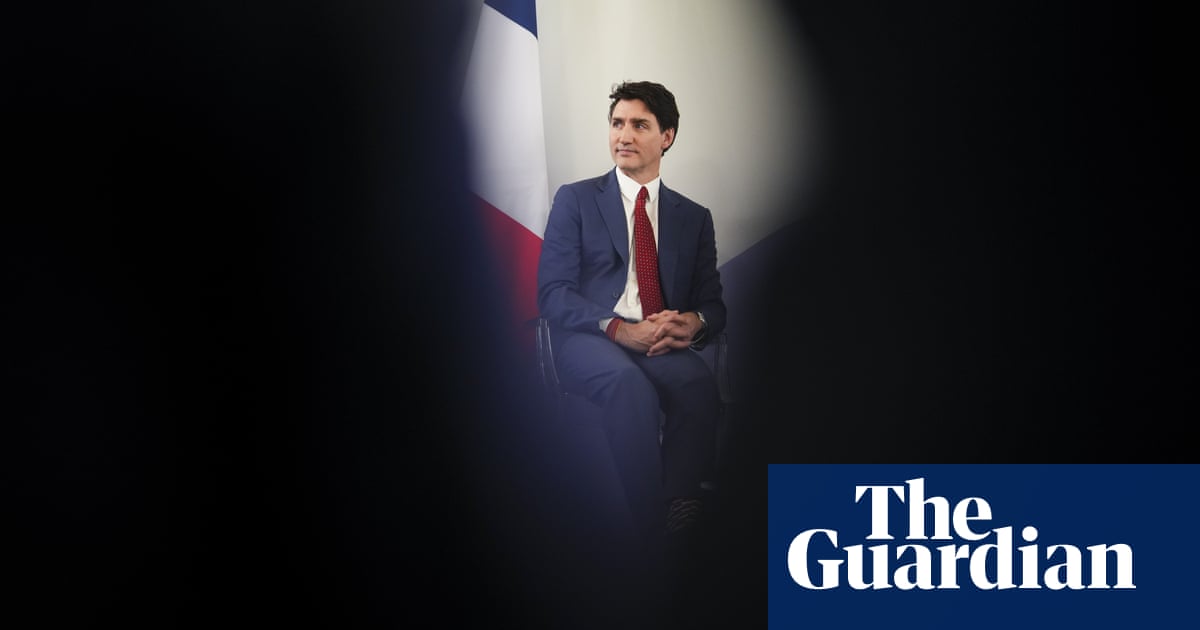Around me, a group of women in skintight gym sets are side planking. Some are wearing full-coverage unitards, others leave slices of midriff bare. No one is wearing a baggy T-shirt from 2008 with a naked Rufus Wainwright on it, and hardened flecks of damp-proof paint. Except me.
If TikTok is to be believed, my gym-mates must be millennials, born between the early 1980s and the mid-1990s; gen Z would find such skin-tightness a bit retro, or basic, or even “jurassic fitness”. Another generational schism has opened online – to add to socks, jeans and boundaries – this time over what millennials and gen Z are wearing to work out in. Tight-on-tight outfits supposedly single you out as a millennial – it is “giving middle school”, said one gen Z user witheringly – while gen Z prefers something baggier. Looking around me at pilates and in the park, though, I suspect some of the women wearing a second, seal-like skin are younger than 30. And here I am, days after turning 40 – squarely a millennial – wearing an enormous T-shirt. It is a muddled picture.
Kelechi Okafor – at 38, a millennial – is a fitness professional, a former personal trainer and the owner of a pole dance studio. She used to wear tighter clothes to exercise but now wears baggy joggers and tops, in the reverse of what TikTok might have you believe. “The way that the tailoring is done for a lot of gymwear does not have my body size in mind,” she says. “There was something liberating about saying: ‘Actually, I’m not wearing this any more. I’m going to wear baggy things.’”
Michelle Carroll, a 29-year-old (millennial) body image coach and nutritionist based in Edinburgh, who typically wears leggings and a vest or cropped top, says that at her gym: “Younger people tend to wear brighter, shorter and tighter clothes.” She sees it as “in part, influenced by ‘fitness culture’ we see online – it’s almost a uniform”.
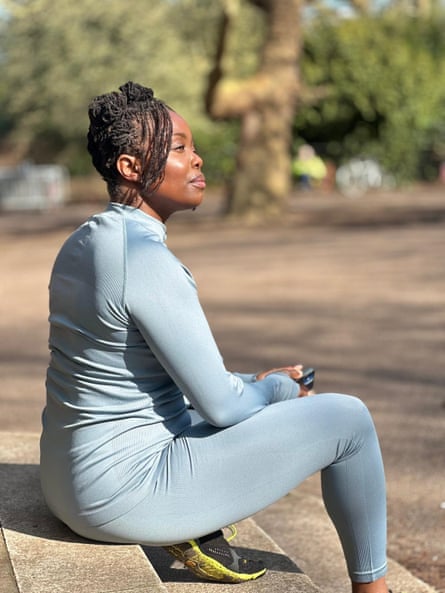
Lauren Crowder, managing director of ELEVEN:ELEVEN Studios in Liverpool city centre, says clients in their 20s and early 30s “tend to embrace the trend of matching activewear sets – brands such as Adanola, Bo+Tee, or Gymshark are really popular” – whereas clients in their late 30s and up “generally prefer a more relaxed fit”. Georgie Burke, founder of the Barre Fitness Studio in Bristol, says the younger clients there like “plain colours, white grip ankle socks and tight vest tops” – what she calls the “Adanola aesthetic”, referencing the British activewear brand that seems to be everywhere now, while the 30-plus crowd opt for “a print legging but with a looser style top”.
Farther afield, in the Canadian city of Guelph, Samantha Brennan, a professor of philosophy and co-author of Fit at Mid-Life: A Feminist Fitness Journey, has also noticed young women wearing beautiful sets – the kind of “workout bikinis” that some men have been complaining are “intimidating”. It is not so much that they are tight that Brennan notices – though they probably are – but that they all match. Where she sees the gym as “a place where you get to take a break from fashion”, she says, “they’re wearing things I recognise as outfits, and they’re specifically bought for wearing at the gym”.
It makes a lot of sense that gym wear is being given as much attention as it is. The gym now has such gravitational pull that for many it is seen as – and this is very much gen Z’s sentiment, not mine – “the new club”. It is a place for socialising and dating; some are calling it “workout-wooing”.
A raft of newer brands, such as Toronto’s Literary Sport, founded by creatives Deirdre Matthews and M Bechara, and Los Angeles’s Everybody.World, set up by former American Apparel employees, may be behind the looser lines, popularising casually-fitting track pants, among other items. Some more longstanding, millennial-coded brands, such as Lululemon, are also now offering baggier fits or “away-from-body styles”, as Lululemon’s chief merchandising officer put it. But, given the often hefty price tags, they appear to be aimed at older exercisers, who are generally more able to afford them. Meanwhile, other brands, such as Sweaty Betty, have been explicitly marketing the idea of wearing tighter, skimpier clothes, at least as part of an exercise ensemble, and disregarding body hang-ups: “Wear the damn shorts” is the tagline from a campaign last year.
While the generational divide may feel over-egged, what we wear to exercise reveals a lot about where we are at with body image. Several brands, for example, now do bottoms with “scrunch” designs at the bum, to accentuate curves, because Kardashian-esque glutes remain idealised. It is a style that unites twentysomething “TikTok gym girlies” and celebrities such as J-Lo.
What you wear to exercise also depends on what exercise you are doing. Reformer pilates – the hyper-expensive and highly engineered full-body workout – makes more sense in cinched styles that won’t get stuck in equipment. A jog in the park, less so. Subtle flares are becoming a thing for yoga, but they would be annoying on a treadmill, and a trip hazard on a squash court.
There are also other, shall we say, external factors. “There’s a fear of people taking advantage and hypersexualising and dehumanising folks, particularly women, in these spaces,” says Samantha Noelle Sheppard, a Cornell professor who writes about sport. What she often sees is a “mix of tight and baggy, like really tight shorts” with an oversized shirt, as a way to keep unwanted eyes off bodies not looking to be objectified. Shakaila Forbes-Bell, a fashion psychologist, has been seeing more conversations among gen Z about wearing baggier clothing for the gym tied to “what is for the male gaze and what is for me”.
Again, though, this doesn’t have to be generational. Navi Ahluwalia, an editor at fashion and sportswear site Hypebae, is a millennial who typically goes for “leggings with a baggier top”. While she loves “the way the tighter gym clothes look”, she also hates “the feeling of people looking at me while I exercise, so I personally don’t want to draw any attention to myself – particularly not from creepy men”. I would hazard that most, if not all, women who exercise in public will have had similar thoughts.
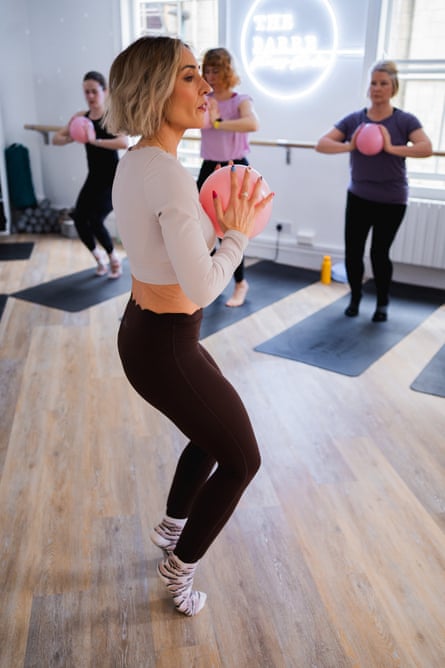
Burke says: “A fair few of our clients will stay in activewear all day, for coffee, work and the school run, due to our studio being less on the sweaty side.” That tallies with the continued march of gymwear as everyday wear. At least part of this is about comfort; activewear is forgiving when working from home and, at least in my case, practical, when combined with the hope that a trip to the gym (or a 20-minute Yoga with Adriene) is just moments away.
It also, consciously or not, broadcasts status. “You think it shows fitness and the idea of an athletic body and a healthy mind,” says Sheppard. “But what it shows is a healthy bank account.” “[It is] meant to be performative in all these different kinds of ways,” she says. “Not only do you look like you have the time to work out, you have the resources to work out – go do your pilates, go do your Peloton class – in a very expensive set.” Looking like a “gym person”, then, perhaps particularly for a younger gen Z crowd, comes with cultural capital.
It is not the first time gym gear has been loaded with meaning. In an article in 2019, New Yorker writer Jia Tolentino posited athleisure as a uniform that represented the principle of “optimisation”: “the process of making something, as the dictionary puts it, ‘as fully perfect, functional, or effective as possible’”.
Athleisure, she said, was designed to optimise your appearance at the same time as your performance. But not on everybody. Lululemon founder Chip Wilson made this explicit. “The definition of a brand is that you’re not everything to everybody … You’ve got to be clear that you don’t want certain customers coming in,” he said in a 2013 interview.
As Tolentino wrote: “Athleisure broadcasts your commitment to controlling your body through working out.” You create – if indeed you can and you want to – a body that fits athleisure rather than the athleisure moulding to fit you.
Okafor looks back to her days of trying to make ill-fitting, tight gymwear work. No matter “how high I pull up the waistband, no matter how much I try to shuffle about with the sports bra, it still doesn’t look right to me”. Clothes seemed to have been designed in a way that wasn’t “honouring” her shape. “It’s just like: ‘Oh, you’re not skinny?’ It’s the thoughtlessness of how these things are made that reinforces that I wasn’t being considered.”
A host of brands now make exercise clothes constructed with different bodies in mind. Okafor cites Grrrl as one (tagline: “We make real clothes for real women who simply don’t care”). Forbes-Bell says the brand Curvy Kate has created “sports bras for larger-chested women at more affordable prices”, something that has been a battle for her since she was a teenager. And Gymshark is “creating a lot of more inclusive clothing: size-inclusive, more modest wear as well. For gym clothing, that was very scarce before.”
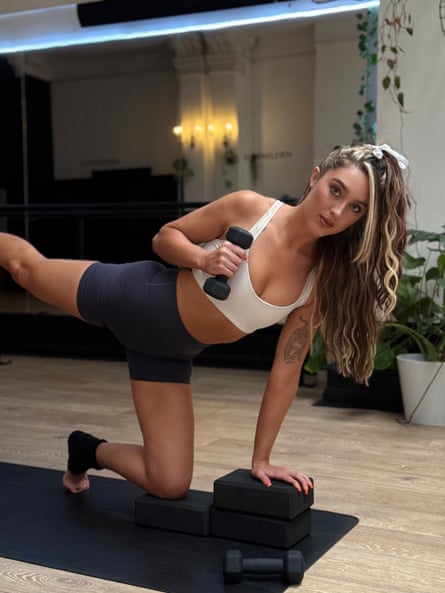
With all the new and improved tight gym gear out there, if younger women in their 20s are still opting for baggier styles, could it be for other reasons? Okafor sees “all manners of bodies and ages” at her pole studio and thinks that, in general, younger generations are “giving themselves more space”. Sheppard sees this as a response to our times. Young people “are living in a period of global crises that make the focus on themselves seem too indulgent … It’s like, just put on clothes. We’ve got bigger problems.”
Ultimately, if there is more room for divergence from a workout uniform, then it might have benefits for all generations. “How many people would probably want to go to the gym and work out if they could wear clothes that didn’t make them feel embarrassed?” asks Okafor.
“It’s about questioning the motivations,” says Forbes-Bell. “And I think that’s empowering, whether it’s baggy or whether it’s tight, that idea of: ‘Why am I actually wearing this? What am I trying to achieve?’”

 3 hours ago
2
3 hours ago
2


